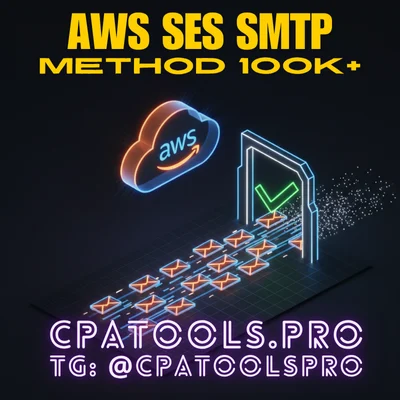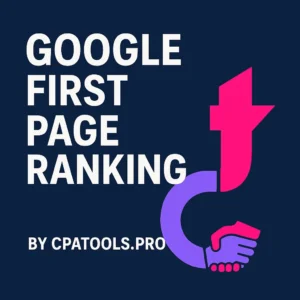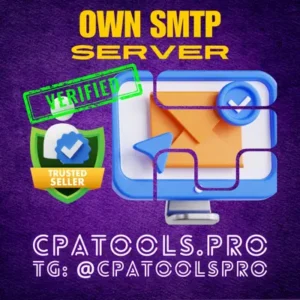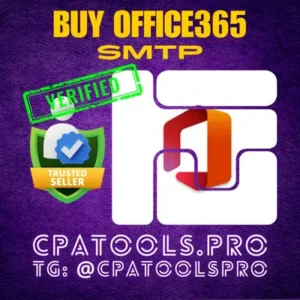Description
The AWS SMTP Method: The Definitive Guide to Approval, Setup & High-Volume Sending
Are you struggling to unlock the full potential of Amazon’s powerful email infrastructure? The first and most critical step is mastering the AWS SMTP Method, yet many businesses find their efforts blocked by a restrictive sandbox environment. Consequently, understanding the exact path to approval is essential for any serious email strategy.
Gaining production access for high-volume sending is a common and intensely frustrating roadblock for developers, marketers, and businesses alike. Vague rejections and stalled projects are often the result of not following the proven aws smtp approve method. Therefore, this comprehensive guide provides an expert-level walkthrough of the entire AWS SMTP ecosystem. We will cover the granular details for approval, provide actionable setup examples, troubleshoot common errors, and present a guaranteed path to success in 2025.
Foundational Concepts: What Exactly is the AWS SMTP Method?
Deconstructing SMTP: The Unseen Engine of Email Communication
Firstly, to understand the AWS solution, one must understand the protocol it’s built upon. At its heart, SMTP (Simple Mail Transfer Protocol) is the universal standard for sending electronic mail across the internet. In short, it functions as the digital world’s postal service. When you send an email, your application or email client acts as the customer, handing the message to a mail server.
This server is the SMTP server. Its job is to process the destination address and route the message across the internet until it reaches the recipient’s inbox. The AWS SMTP Method, therefore, is the process of leveraging Amazon’s global, powerful, and highly reliable infrastructure as your dedicated SMTP server for sending emails.
Why Choose Amazon SES as Your SMTP Server in 2025?
While competing services like SendGrid or Mailgun exist, Amazon Simple Email Service (SES) consistently stands out for several critical reasons. It is far more than just a basic aws smtp server; it is a complete email-sending ecosystem engineered for peak performance.
- Superior Deliverability: Amazon employs a dedicated team that works directly with Internet Service Providers (ISPs) to ensure your emails reliably reach the inbox. Furthermore, their sophisticated systems actively manage IP reputation and provide the tools you need to monitor your sender health.
- Infinite Scalability: Whether you send a hundred emails a day or ten million, SES scales automatically and seamlessly. As a result, you never have to worry about server capacity, performance throttling, or infrastructure management.
- Unbeatable Cost-Effectiveness: For most businesses, the pay-as-you-go pricing of the aws smtp service is a significant advantage. At approximately $0.10 per 1,000 emails following a generous free tier, it remains one of the most affordable enterprise-grade solutions available.
- Global Low-Latency Sending: With data centers located worldwide, you can utilize a regional aws smtp host closest to your primary audience. This geographic proximity reduces latency, leading to faster email delivery times.
The Critical First Step: Understanding the AWS SES Sandbox Environment
Crucially, every new Amazon SES account starts in the “sandbox.” This is a deliberately restricted environment. Amazon implements this to protect its vast network’s sending reputation from spam, abuse, and low-quality senders. In other words, they need to verify your legitimacy before allowing you to send emails to the global internet.
While operating within the sandbox, you will face several strict limitations:
- You can only send emails to and from email addresses and domains that you have explicitly verified within your SES account.
- Your total sending quota is capped at a mere 200 emails per 24-hour period.
- Your maximum sending rate is restricted to just one email per second.
This environment is perfectly suitable for initial development and testing. However, to send emails to your actual customers and unlock high-volume sending, you must successfully navigate the aws smtp approve method to gain production access.
The Golden Path: Your Step-by-Step AWS SMTP Approve Method
Prerequisite Checklist: What You MUST Have Before You Apply
Before you even begin the application process, it is vital to have the following assets prepared. Submitting a request without this foundation in place is a near-certain recipe for rejection, wasting your valuable time.
- A fully configured and identity-verified AWS account.
- A registered domain name that you own and have complete DNS control over.
- A professional, fully functional, and live website hosted on that domain. A simple “coming soon” or “under construction” page is not acceptable.
- A clear, legitimate, and well-documented business use-case for sending emails (e.g., transactional receipts, user notifications, opt-in newsletters).
Step 1: Building a Foundation of Trust with Domain Authentication (SPF, DKIM, DMARC)
The very first step in proving your legitimacy to AWS is verifying your sending domain. This action confirms your ownership and is essential for setting up the email authentication protocols that are non-negotiable for achieving high deliverability.
You must correctly configure three types of DNS records in your domain provider’s control panel:
- SPF (Sender Policy Framework): This is a TXT record that explicitly lists which mail servers are authorized to send email on behalf of your domain. For AWS, the record typically looks like this:
v=spf1 include:amazonses.com ~all - DKIM (DomainKeys Identified Mail): This provides an encrypted digital signature to your emails, which proves to receiving servers that the email content was not altered in transit. AWS provides three unique CNAME records that you must add to your DNS to enable this.
- DMARC (Domain-based Message Authentication, Reporting, and Conformance): This TXT record instructs receiving servers on how to handle emails that fail SPF or DKIM checks. A basic DMARC policy can tell them to reject, quarantine (send to spam), or simply monitor these failed messages.
Properly implementing all three is a powerful signal to AWS that you are a serious, responsible sender.
Step 2: The Core of the AWS SMTP Approve Method: Crafting a Flawless Request
This section is the absolute heart of the approval process. Your answers in the production access request form are scrutinized by both automated systems and human reviewers. Therefore, vague, lazy, or incomplete answers are the single most common reason for denial.
The “Use Case Description” field is where you make or break your application. You must be detailed and transparent.
A Poor Example (Guaranteed to be rejected):
“I want to send emails for my business. Please approve.”
A Gold-Standard Example (High chance of approval):
“We are requesting production access for our e-commerce platform at example.com. We need to send critical transactional emails, including order confirmations, shipping notifications, and password resets.”
“Additionally, we will send a weekly promotional newsletter to customers who have explicitly opted-in during checkout or through a double opt-in form on our blog. Our user acquisition process is 100% organic; we will never use purchased or rented email lists.”
“To ensure compliance and sender reputation, every marketing email will contain a clear, one-click unsubscribe link. Moreover, we have fully configured Amazon SNS topics to automatically process all bounces and complaints, ensuring that invalid or uninterested recipients are immediately removed from our active sending list.”
Step 3: Proving Responsible List Management with Bounce & Complaint Handling
Amazon will not grant production access unless you can demonstrate an automated system for handling bounces (invalid or non-existent email addresses) and complaints (users who mark your email as spam). Ignoring these metrics is toxic to your sender reputation and to Amazon’s network.
The required method for this is using Amazon SNS (Simple Notification Service). You must create distinct SNS topics for both bounces and complaints. Following this, you must configure your verified sending identity (your domain) to publish notifications to these topics. You can then subscribe an email address or a Lambda function to these topics to receive real-time alerts, which your system must use to purge those email addresses from your mailing list.
When DIY Fails: The CpaTools Pro Guaranteed Approval Solution
Why Even Legitimate Senders Get Denied by the AWS SMTP Service
Sometimes, even after meticulously following every step, a legitimate request is denied. The AWS review process can be frustratingly opaque. Factors like a brand-new domain with no sending history, being in a business vertical that AWS deems high-risk (like affiliate marketing), or simply failing to use the precise language their reviewers look for can trigger a rejection.
This uncertainty is precisely where an expert service becomes essential. At CpaTools Pro, we have successfully navigated the aws smtp approve method hundreds of times. We understand the unwritten rules and operational nuances, transforming a high-risk, time-consuming process into a simple, guaranteed outcome for your business.
Our Proven AWS SMTP Method Plans: A Solution for Every Need
We offer a tiered range of solutions designed to meet your specific goals and budget, removing the guesswork entirely.
Basic Plan
- Price: $250
- Goal: Provides our core, proven method to get your AWS SES account approved for a 50,000 email-per-day limit.
- Best For: Startups and developers who need a reliable starting point and are comfortable with a strong (70%+) chance of success.
Pro Plan
- Price: $480
- Goal: Delivers a more refined and robust method, boosting the approval success score to over 80% for the 50k daily sending limit.
- Best For: Small businesses and marketing teams that require a higher degree of certainty for their campaigns.
Premium Plan
- Price: $980
- Goal: A comprehensive package including two distinct approval methods (primary and backup) plus our strategy for Amazon console account approval.
- Best For: Serious marketers and established businesses, boasting a 90%+ success score.
Gold Plan
- Price: $1850
- Goal: Our ultimate, 100% guaranteed, all-inclusive solution. We provide everything from verified AWS account creation to providing our proprietary method for increasing limits beyond 50k, plus lifetime access to a private premium tool.
- Best For: Enterprises and high-volume senders who cannot afford any risk, failure, or delay in their email operations.
Post-Approval: Technical AWS SMTP Configuration and Integration
Step 1: Creating and Securing Your AWS SMTP Credentials
Once your account is moved to production, your first action is to create secure SMTP credentials. Critically, you must not use your root AWS account keys for this purpose, as that poses a massive security risk. The correct procedure involves using IAM (Identity and Access Management).
Navigate to the IAM service in your AWS Console. Here, you will create a new user with “Programmatic access.” Then, attach the “AmazonSESFullAccess” managed policy to this user. From this user’s security credentials, you can then create specific SMTP credentials. AWS will provide you with an SMTP Username and Password that are distinct from the user’s regular access keys.
Step 2: Your AWS SMTP Settings: Endpoint, Port, and Encryption
Your specific aws smtp settings are determined by the AWS region in which you configured SES. You can find these details directly in the SES Console under the “SMTP Settings” section.
- SMTP Host Name: This is your server address, which will look similar to
email-smtp.us-east-1.amazonaws.com. The region will vary based on your setup. - Port: While AWS supports multiple ports, for the best combination of security and compatibility, you should always use Port 587.
- Encryption: You must connect using STARTTLS encryption to ensure your credentials and email contents are protected during transit.
Step 3: Integrating with WordPress using WP Mail SMTP
A very common use case is connecting AWS SES to a WordPress website for reliable email delivery. The easiest way to achieve this is with a plugin like WP Mail SMTP.
After installing the plugin, you will select “Other SMTP” as your mailer. Then, you will simply enter the aws smtp host, port, and encryption settings you just located. Finally, you’ll input the SMTP username and password you created in IAM. This will route all emails sent from your WordPress site (contact forms, WooCommerce notifications, etc.) through the highly reliable AWS infrastructure.
Maintaining Sender Health: Advanced Best Practices and Monitoring
Your Sender Reputation: The Most Important Metric You’re Not Watching
Your sender reputation is a crucial score that major ISPs like Gmail and Outlook assign to your domain. A high score ensures inbox placement, while a low score routes your emails directly to the spam folder. Consequently, you must protect it diligently.
The two most important metrics to monitor within your SES dashboard are:
- Bounce Rate: This is the percentage of your emails that could not be delivered. A healthy, sustainable rate is well under 2%. Anything higher is a major red flag.
- Complaint Rate: This is the percentage of recipients who actively mark your email as spam. You must keep this metric below 0.1% to avoid account suspension.
Using the SES Reputation Dashboard for Proactive Monitoring
Amazon provides a “Reputation Metrics” dashboard within the SES console. You must make it a habit to check this dashboard regularly. It provides a real-time look at your bounce and complaint rates, and it will show the status of your account. If your rates begin to climb, AWS may place your account under review or even pause your ability to send emails. This dashboard gives you the data you need to act before that happens.
Troubleshooting Common AWS SMTP Errors Like a Pro
Solving: “Connection Timed Out” or “Could not connect to host”
This error almost always points to a network or firewall issue blocking the connection to the aws smtp server. First, check your application’s source. If it’s on an EC2 instance, ensure the outbound rules of its Security Group explicitly allow traffic on TCP Port 587. In addition, check the Network ACLs of the subnet for similar restrictions.
Fixing: “535 Authentication Credentials Invalid”
This is a straightforward credential error. The username or password you’ve provided is incorrect. Carefully re-generate or copy your SMTP credentials from the correct IAM user. Remember that credentials are region-specific; credentials created for `us-east-1` will not work for the `eu-west-1` endpoint.
Overcoming: “554 Message Rejected: Email address is not verified”
If you encounter this error, it means your account is still in the sandbox environment. As a result, you are still restricted to sending only to verified email addresses. The only solution is to revisit and successfully complete the production access request.
Extensive FAQs about the AWS SMTP Method and SES
General & Pricing FAQs
What is the latest AWS SMTP pricing for 2025?
AWS SES pricing is exceptionally competitive. For applications hosted on EC2, the first 62,000 emails sent per month are free. Beyond that, the standard rate is $0.10 per 1,000 emails, plus data and attachment fees. This makes the amazon smtp pricing highly attractive for businesses of all sizes.
Is the AWS free SMTP server offer legitimate?
Yes, the AWS Free Tier includes a generous amount for SES. However, this applies only to sending from an application hosted on an EC2 instance. Furthermore, you must still get your account out of the sandbox to use it for production purposes.
What’s the difference between AWS SES and a regular SMTP server?
A regular SMTP server is a single server that you must manage, secure, and scale yourself. In contrast, AWS SES is a managed, cloud-based service that handles all infrastructure, IP reputation management, and scalability for you across a global network.
Approval & Limits FAQs
Can I use the AWS SMTP Method with a brand-new domain?
Yes, but it is more challenging. AWS reviewers are more cautious with new domains. To maximize your chances, ensure your website is complete and professional, and that your use-case description is exceptionally detailed and transparent about your opt-in processes.
How is it possible to increase my sending limit from 50k to over 1 million?
Absolutely. After establishing a consistent sending history with very low bounce and complaint rates for several weeks, you can open a support case with AWS to request a quota increase. You must provide data to prove you are a responsible sender. Our Gold Plan includes the specific methodology for this process.
How does CpaTools Pro’s 100% guarantee for the Gold plan actually work?
Our guarantee is straightforward and based on our confidence. We handle the entire process, and if we cannot get your account approved for production access as described, you are entitled to a full refund as detailed in our official refund policy.
Technical & Troubleshooting FAQs
What is an AWS SMTP Relay and when should I use it?
An aws smtp relay configuration is when you set up your own internal mail server (like Postfix or Microsoft Exchange) to forward all its outbound email through Amazon SES. This is useful for legacy applications that can’t be configured to use SMTP authentication directly but can point to an internal relay.
Where do I find my SES SMTP credentials?
Your ses smtp credentials are not your standard AWS keys. You must create them specifically from within the IAM user account that has been granted SES permissions. Navigate to IAM -> Users -> (Your User) -> Security credentials -> “Create SMTP credentials”.
Why was my AWS production access request denied?
The most common reasons for denial include a vague use-case description, a website that appears incomplete, failure to describe how you will handle bounces and complaints, or applying with a new domain without a clear, trustworthy business purpose.
Conclusion: Your Next Step to Mastering AWS Email Sending
Ultimately, the AWS SMTP Method provides an unparalleled combination of power, scalability, and cost-effectiveness for any modern email strategy. However, success is entirely dependent on a meticulous approval process and a long-term commitment to responsible sending practices. Following these guidelines is therefore not optional, but essential.
You can certainly choose to navigate this complex process yourself using the detailed, expert-level steps in this guide. On the other hand, you can leverage the proven expertise and guaranteed success offered by CpaTools Pro to save critical time, eliminate all frustration, and completely remove the risk of failure from the equation.
Don’t let the AWS sandbox limit your business growth any longer. Explore our guaranteed AWS SMTP Method plans now, or join our public Telegram community to discuss your specific needs with our team of experts.






Reviews
There are no reviews yet.